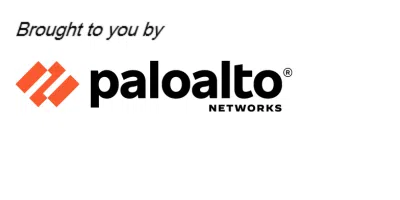Cut through security noise, catch threats ahead: How one smart platform spots and stops AI-powered attacks
With AI making cyber attacks more sophisticated than ever, businesses need unified, intelligent security to fight back, says cyber security company Palo Alto Networks
From ride-hailing to online banking, today’s digital services rely on a complex infrastructure of cloud computing, applications and networks. While this digital ecosystem powers innovation – such as the vast possibilities of artificial intelligence (AI) – it also introduces new security challenges, especially as AI transforms the cyber threat landscape.
AI is already helping cyber criminals to create more convincing phishing e-mails that trick victims into unwittingly exposing their devices to an attack. This problem is going to get worse this year as cyber criminals weaponise AI in more potent ways, says Palo Alto Networks.
The cyber-security firm predicts that deepfakes are expected to go mainstream in Asia-Pacific this year.
Audio deepfakes will also become more widespread, as the available technology allows for highly credible voice cloning. Potentially, a malicious actor could imitate a chief executive or chief financial officer’s voice and trick their subordinates into sending funds to the attacker’s accounts.
According to Palo Alto Networks, deepfakes could be used alone or as part of a larger attack and such deceptive tactics could happen much more often this year.
A growing web of digital threats
In a highly connected world, companies and organisations are finding it increasingly difficult to monitor multiple points of vulnerability simultaneously. This includes monitoring PCs used by employees, servers delivering online services and many parts of the digital supply chain such as apps and software used to deliver these services.
As a result, many businesses are overwhelmed with information. A recent joint research by Palo Alto Networks and IBM reveals that the average organisation uses 83 different security solutions from 29 vendors, with 52 per cent of executives citing complexity as the biggest impediment to security operations.
While each tool is designed to address specific challenges – be it protecting cloud applications, connecting remote workers or defending against threats like malware – managing so many tools often leads to operational complexity.
“The reason why people have so many tools is that there has not been a platform to integrate these insights,” says Steven Scheurmann, Palo Alto Networks’ regional vice-president for Asean.
“With so many alerts, security ops teams spend most of their time responding to alerts, and most of these alerts might be just noise,” he notes. “Alert fatigue is real – one can become tired and make a mistake.”
Simplifying security through integration
To combat the usage of several tools, many businesses have begun centralising their cyber-security efforts into a single integrated platform. This gives them a clearer view of what is going on, enabling them to be proactive rather than “fight fires” every day.
Palo Alto Networks’ Precision AI has helped many businesses reduce the alerts coming in by only sending relevant ones to the cyber security team. The result: a better way to fight threats in this era of complex IT infrastructure.
By analysing 7.6 petabytes of data daily, Precision AI delivers proactive threat detection across an organisation’s entire digital footprint – networks, endpoints, cloud environments and security operations centers.
According to the company, it collects two to four times more data compared to any other cyber security vendor. This data, it adds, is the most granular and comprehensive first-party data, which enables the Precision AI system to block 11.3 billion attacks daily.

“We have the ability to stitch things together and give insights,” says Scheurmann. “What platformization means is you do not just react but be proactive.”
He adds: “An analyst can be more productive and laser-focused. They can predict an attack before it happens.”
He cites the Log4J vulnerability back in 2021 as an example, which affected large amounts of digital services across the world. Palo Alto Networks, he notes, had alerted customers that it was a potential issue before it became widespread.
Managing cyber security risks
There is no way to be completely safe from cyber attacks, says Scheurmann. However, he adds that centralising cyber security tools on a platform will let businesses better deal with the complexity of today’s digital infrastructure.
There is no silver bullet to prevent every cyber attack, but a fragmented security approach is no longer sustainable. Organisations need platform-driven security to better deal with the complexity of today’s digital infrastructure.
It will also help fend off increasingly sophisticated and voluminous attacks from AI-powered cyber adversaries. In other words, use AI to fight AI with a system such as Palo Alto Networks’ Precision AI.
“Organisations have to better equip themselves with more powerful tools to help them ward off attacks in an interconnected digital world that is set to become more complex with AI,” he adds.
For deeper insights into platformization and Precision AI, join Palo Alto Networks at Ignite on Tour Singapore 2025 – a premier gathering of cyber security leaders and influencers.

Share with us your feedback on BT's products and services
